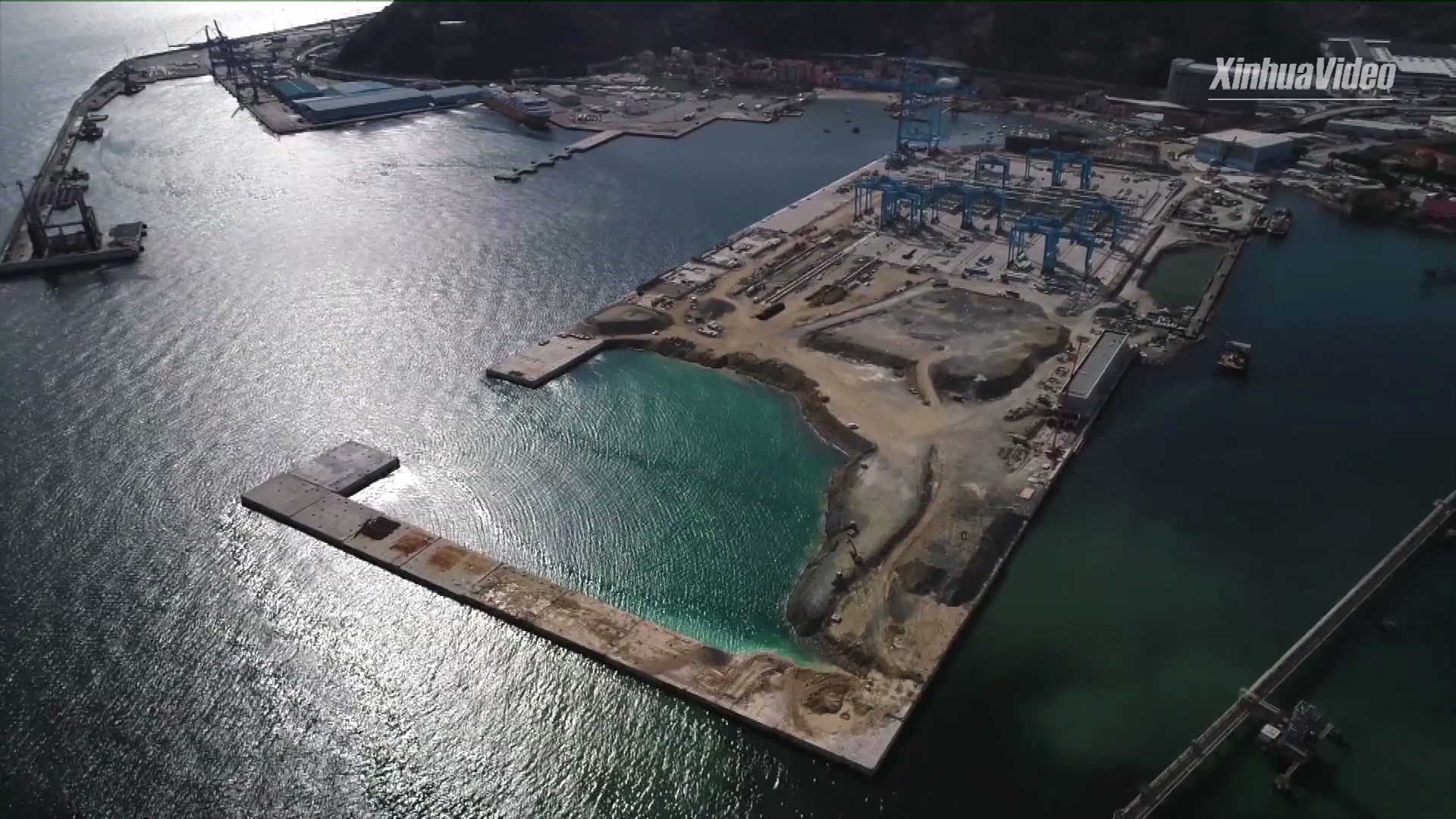Embracing China, Italian port regains shine

New Vado Gateway terminal will be opened in December and become one of the most capable terminals in Europe. (Xinhua)
Not far from an abandoned industrial site with rusted metals reminiscent of its manufacturing past, the port of Vado Ligure carries the promise of the Italian city's future.
Neighboring an old reefer terminal that has so far handled mostly bananas and pineapples, new Vado Gateway terminal, under a partnership between European and Chinese businesses, will be opened in December and become one of the most capable terminals in Europe.
COSCO SHIPPING Ports, under the world's largest integrated shipping enterprise China Ocean Shipping Corporation (COSCO), bought a 40-percent stake in the terminal, second to the Netherlands-based APM Terminals, part of the Danish conglomerate Maersk.
"The arrival of COSCO in APM was welcomed as an important turning point, it has strengthened this group and it has provided an exceptional chance that we wouldn't have had in an Italian investment scenario," Monica Giuliano, mayor of Vado Ligure, told Xinhua.
JOB CREATION
Things did not go well for employment in Italy, one of the most indebted economies in the European Union (EU).
In Liguira region, where Vado Ligure is located, the unemployment rate of 37.9 percent among young people aged 15-24 is the highest among all age groups, according to EU statistics.
The city used to boast factories and industries, but many of them have closed in recent years. However, Chinese businesses came with confidence in the port, also bringing confidence to locals.
"I see the Chinese investments in Vado in a positive way, because we are undergoing a period of crisis," Danilo Causa, who is in charge of the local transport federation under the Italian Confederation of Trade Unions, told Xinhua.
APM Terminals expects its number of employees to grow from 240 in December 2019 to 300 by the end of 2020 and around 400 at full operation, in the city of 8,500 citizens, said Paolo Cornetto, managing director of APM Terminals at Vado Ligure.
A vibrant port could also create other jobs, as some study has showed each direct job can generate two indirect jobs, Cornetto told Xinhua.
SHOT OF ENERGY
Beyond jobs, the ongoing upgrading will enable Vado Ligure to have "the only terminal in the region at the moment that can handle" ultra large container vessels, according to Cornetto.
Chinese partners "add value to our presence in Vado (Ligure), both commercially (and) technically," he added.
The new terminal will have an annual capacity of 900,000 TEUs (20-foot equivalent unit), three times more than the old terminal, and enable Vado Ligure to compete with better known European ports.
Huge, blue cranes bearing their manufacturers' acronym name ZPMC -- Zhenhua Port Machinery Company, another Chinese company -- will create the most automated stacking yard in Italy.
A new off-dock four-lane rail facility with a capacity for 14 trains per day will also provide rapid access to central and northern Europe such as Switzerland, Germany and France.
NEW SILK ROAD
The bond between China and Italy could trace back over seven centuries to Venetian merchant and explorer Marco Polo's trailblazing journey along the ancient Silk Road to China.
Continuing the tradition, Italy earlier this year inked a memorandum of understanding with China on the Belt and Road Initiative, which aims to bring the world closer through infrastructure improvement and other efforts.
Noting Italy is the first country of the Group of Seven to sign such an agreement, Gian Enzo Duci, professor at the University of Genoa and president of Italian National Federation of Ship Brokers and Agents, said "moving on that line, there will be a big part of cargo of the present and the future (through Italy). And if we are able to update and upgrade our road and rail infrastructure, we can be the Chinese door to Central Europe."
Cisco Wang, the representative of COSCO SHIPPING Ports in Vado Ligure, said his company would expand investment along the Belt and Road in a win-win spirit.
China is Italy's largest trading partner in Asia, with their bilateral trade growing 9.1 percent to 54.24 billion U.S. dollars last year.
WIN-WIN AHEAD
The ongoing construction in Vado Ligure is the largest program for Italian ports these years.
"Chinese investments, like the one done in Vado Ligure, are necessary; if we want to develop a certain area, we need to welcome these investments. We can't stop progress," said Giancarlo Vinacci, deputy mayor of nearby port city Genoa which boasts Italy's busiest port.
Last year, Genoa tragically lost the Morandi Bridge in a collapse, which reflected an urgent need for Italy to improve infrastructure.
Li Shaofeng, counsellor of commerce at the Chinese Consulate-General in Milan, said the two countries have seen great potential for cooperation in infrastructure construction, since China has financial resources and technical expertise and that's exactly what Italy needs.
Paolo Firpo, container operation manager at APM Terminals, said the biggest change at the port has been the transformation from "a 'family' port business to a multinational business."
"It is clear that the involvement of Maersk and COSCO has brought an upgrade of the port; the fact of working with a different culture and different methods has brought a professional upgrade that I find very exiting," he said. "We have the operational and commercial aspect, where we have seen positive indications."


